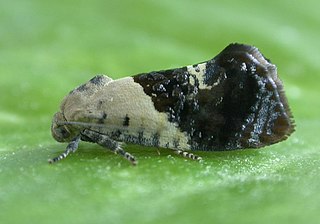
Hypertropha chlaenota is a species of moth of the family Depressariidae first described by Edward Meyrick in 1887. It is found in Australia, where it has been recorded from Victoria, Queensland, New South Wales, the Australian Capital Territory and South Australia.
Compsoctena autoderma is a moth in the family Eriocottidae. It was described by Edward Meyrick in 1914. It is found in South Africa and Zimbabwe.
Compsoctena dermatodes is a moth in the family Eriocottidae. It was described by Edward Meyrick in 1914. It is found in South Africa, Tanzania and Zimbabwe.
Compsoctena microctenis is a moth in the family Eriocottidae. It was described by Edward Meyrick in 1914. It is found in South Africa, Tanzania and Zimbabwe.
Compsoctena numeraria is a moth in the family Eriocottidae. It was described by Edward Meyrick in 1914. It is found in South Africa, where it has been recorded from Gauteng.
Compsoctena terrestris is a moth in the family Eriocottidae. It was described by Edward Meyrick in 1914. It is found in South Africa, where it has been recorded from Gauteng.
Compsoctena cyclatma is a moth in the family Eriocottidae. It was described by Edward Meyrick in 1908. It is found in Mozambique, South Africa (Limpopo), Zambia and Zimbabwe.
Compsoctena furciformis is a moth in the family Eriocottidae. It was described by Edward Meyrick in 1921. It is found in South Africa and Zimbabwe.
Compsoctena aethalea is a moth in the family Eriocottidae. It was described by Edward Meyrick in 1907. It is found in India.
Compsoctena brachyctenis is a moth in the family Eriocottidae. It was described by Edward Meyrick in 1909. It is found in South Africa.
Compsoctena fossoria is a moth in the family Eriocottidae. It was described by Edward Meyrick in 1920. It is found in South Africa.
Compsoctena ostracitis is a moth in the family Eriocottidae. It was described by Edward Meyrick in 1913. It is found in South Africa.
Compsoctena susurrans is a moth in the family Eriocottidae. It was described by Edward Meyrick in 1911. It is found in South Africa, where it has been recorded from Limpopo.
Dichomeris famulata is a moth in the family Gelechiidae. It was described by Edward Meyrick in 1914. It is found in Guyana, Colombia, Brazil, Peru and Trinidad.
Dichomeris condylodes is a moth in the family Gelechiidae. It was described by Edward Meyrick in 1921. It is found in Zimbabwe.
Dichomeris turgida is a moth in the family Gelechiidae. It was described by Edward Meyrick in 1918. It is found in South Africa.
Dichomeris cymotrocha is a species of moth in the family Gelechiidae. It was described by Edward Meyrick in 1913. It is found in South Africa.
Parapsectris ferulata is a moth in the family Gelechiidae. It was described by Edward Meyrick in 1918. It is found in South Africa (KwaZulu-Natal).
Dicranucha sterictis is a moth of the family Gelechiidae. It was described by Edward Meyrick in 1908. It is found in Mozambique, Namibia, Zimbabwe and Gauteng, South Africa.
Depressaria orthobathra is a moth in the family Depressariidae. It was described by Edward Meyrick in 1918. It is found in South Africa.
